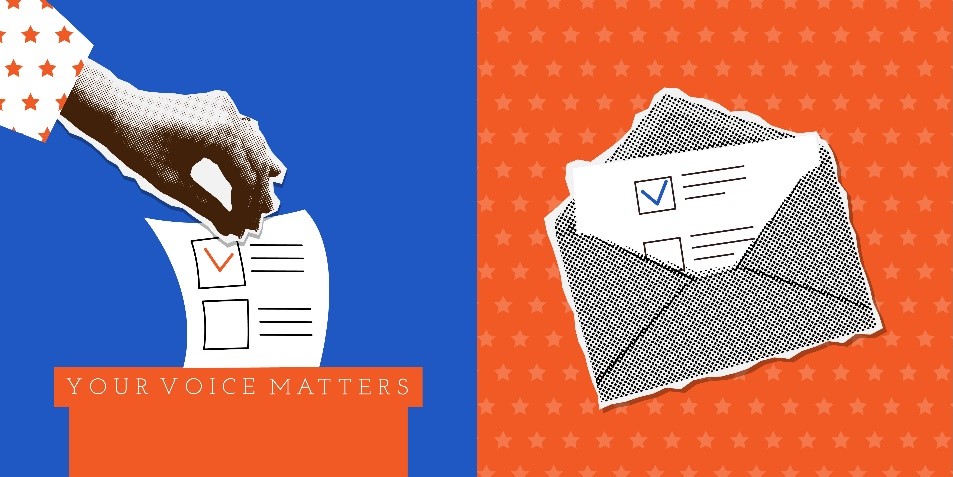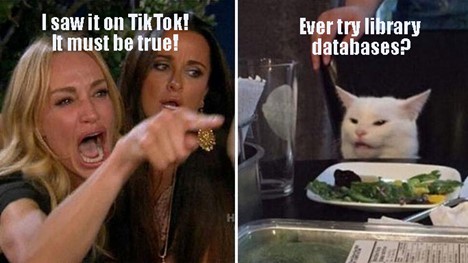During any election season, voters are bombarded with messages regarding candidates, policies and the potential outcomes of a particular candidate’s victory. Yet much of that messaging is distributed as lower-quality information, sometimes fact-free in its entirety. Voting is an incredibly important duty for American citizens, and that means it’s doubly important to know how to find good quality information. This is a guide to help locate facts and navigate the current political information environment.
- Memes are horrible sources of information
Goofy cat pictures. Images of celebrities saying or writing things they might not in a real-world situation. Dogs in glasses. These things seem harmless, but they’re not. Why are memes so bad? As defined by Richard Dawkins, memes are units of cultural information, but their definition has shifted of late to describe visual images with text intended for dispersal on the Internet. They harm the information environment in two ways. One, they flatten the conversation. A study from 2022 showed that, when memes were posted as content on social media sites, people were less likely to engage with that content. Social media is explicitly designed to allow for back-and-forth conversation among participants, but if people aren’t communicating with one another over something as basic as a meme, they also aren’t sharing ideas or correcting false information presented in meme format. Two, a meme cannot provide nuanced information, and they rarely cite their sources. While a meme can be viewed as a form of creative political expression, memes often serve as anonymous propaganda, promoting narratives with no known source or basis in fact. These two qualities make memes extremely poor quality sources of information. While it is indeed possible, if time consuming, to fact-check a meme, and although some social media networks include a basic level of fact-checking, the better course of action is to ignore them completely and refuse to share them with others.
2. Lots of good quality information exists, at the local, state and national level.
Fact checkers abound, and most of them are very good at what they do. Ballotpedia has put together an excellent tutorial discussing the three major fact checkers (FactCheck.org, Politifact and the Washington Post Fact-Checker), explaining how they work and their metersticks for news accuracy. Other good fact-checkers exist, such as AP Fact Check, designed by the Associated Press. However, most fact-checkers work with national and international news stories. To fill in the gaps, local news sources are important for promoting and accessing information about candidates, policies and issues of the day important to local communities. The League of Women Voters puts out an essential guide to learning about local and state candidates. In addition to these resources, it is also important to look at the websites of the candidates themselves. Where do they stand on the issues? Who endorsed them? What positions do they represent? Last, some candidates have previously held political office. It is a very good idea to look up their records and see what bills they sponsored and how they voted in the past.

3. Avoid strong bias and find good news sources
While it is comforting in some ways to read and watch news that reflects previously held viewpoints, accurate news is more important. Finding honest, high quality information, even if it is troublesome or disturbing, allows people to confront issues directly instead of hiding from them. But first, it’s crucial to pay attention to the news in the first place. Only 19% of people ages 18-29 follow the news at all. Staying informed about the world is crucial to understanding how to change it for the better, so even if it proves challenging, seek out good quality news sources every day and stay on top of what’s happening.
4. Vote.
Voting is one of the most important ways that ordinary people can change the world. Each vote is a glimpse into a new future, a portal into the way the world could be with enough work and dedication. The word “vote” comes from the Latin term “votum”, meaning vow, prayer, desire or promise. In essence, then, each vote expresses, in no uncertain terms, the most deeply held values of the people. It is a right that many citizens have fought and died for over the centuries, and both the 15th and 19th Amendments, plus the Voting Rights Act of 1965, ensure the right to vote for all Americans who are 18 years old or older. Indiana residents can register to vote here, while Ohio voters should access this link. In both states, in order to vote in the November election, all voters must be registered by October 7.

While the amount of misinformation tends to intensify around political elections, finding good quality information is still possible. Using fact checkers, tools like the SIFT Method and ignoring cheap, low quality information sources like memes and heavily slanted opinions can go a long way toward navigating the news. And as always, asking a librarian is a very, very good idea. Unsure about the quality of a news source? Want to know more about identifying good news sources? Curious about local, state or national issues? Ask us! iueref@iu.edu.


